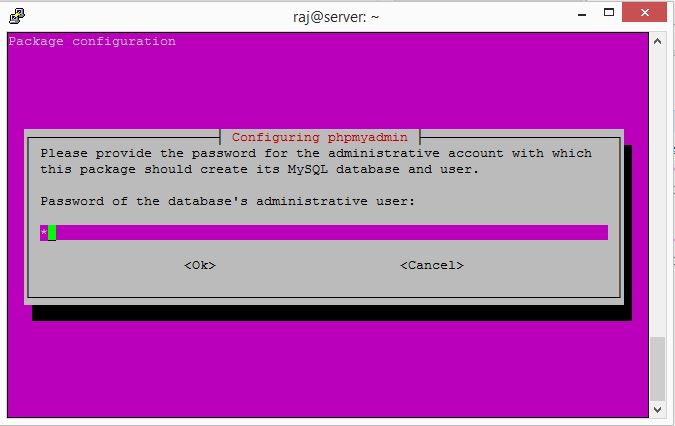

- #Phpmyadmin root password how to#
- #Phpmyadmin root password password#
- #Phpmyadmin root password free#
Make sure that you have your SSH credentials (. Open a new terminal window on your local system (for example, using “Finder -> Applications -> Utilities -> Terminal” in macOS or the Dash in Ubuntu).

To access the application using your Web browser, create an SSH tunnel, as described below. If you are unable to access phpMyAdmin, verify that the SSH tunnel was created by checking the PuTTY event log (accessible via the “Event Log” menu): Here is an example of what you should see: Log in to phpMyAdmin by using the following credentials: The SSH session will now include a secure SSH tunnel between the two specified ports.Īccess the phpMyAdmin console through the secure SSH tunnel you created, by browsing to. In the “Session” section, save your changes by clicking the “Save” button.Ĭlick the “Open” button to open an SSH session to the server. You’ll see the added port in the list of “Forwarded ports”. This will create a secure tunnel by forwarding a port (the “destination port”) on the remote server to a port (the “source port”) on the local host (127.0.0.1 or localhost).Ĭlick the “Add” button to add the secure tunnel configuration to the session. Remember that if you are redirecting HTTP requests to the HTTPS port, you must use destination port 443 instead of 80. In the “Connection -> SSH -> Tunnels” section, add a new forwarded port by introducing the following values: Once you have your SSH client correctly configured and you have confirmed that you can successfully access your instance using SSH, you need to create an SSH tunnel in order to access phpMyAdmin.
#Phpmyadmin root password free#
In the instructions below we have selected PuTTY, a free SSH client for Windows and UNIX platforms. In order to access phpMyAdmin via SSH tunnel, you need an SSH client.
#Phpmyadmin root password how to#
TIP: Refer to these instructions to learn how to obtain your private key. Watch the following video to learn how to easily access phpMyAdmin on Windows through an SSH tunnel: In this case, modify the steps below to use ports 81 or 443 respectively instead of port 80 for the tunnel endpoint.

Similarly, if you have enabled Varnish (TM) or HTTPS redirection, your stack’s Web server might be accessible on port 81 (Varnish (TM)) or port 443 (SSL). If this port is already in use by another application on your local machine, replace it with any other port number greater than 1024 and modify the steps below accordingly. NOTE: The steps below suggest using port 8888 for the SSH tunnel. IMPORTANT: Before following the steps below, ensure that your Web and database servers are running. This implies that you must be able to connect to your server over SSH in order to access these applications remotely. To access it from a remote system, you must create an SSH tunnel that routes requests to the Web server from 127.0.0.1.
#Phpmyadmin root password password#


 0 kommentar(er)
0 kommentar(er)
